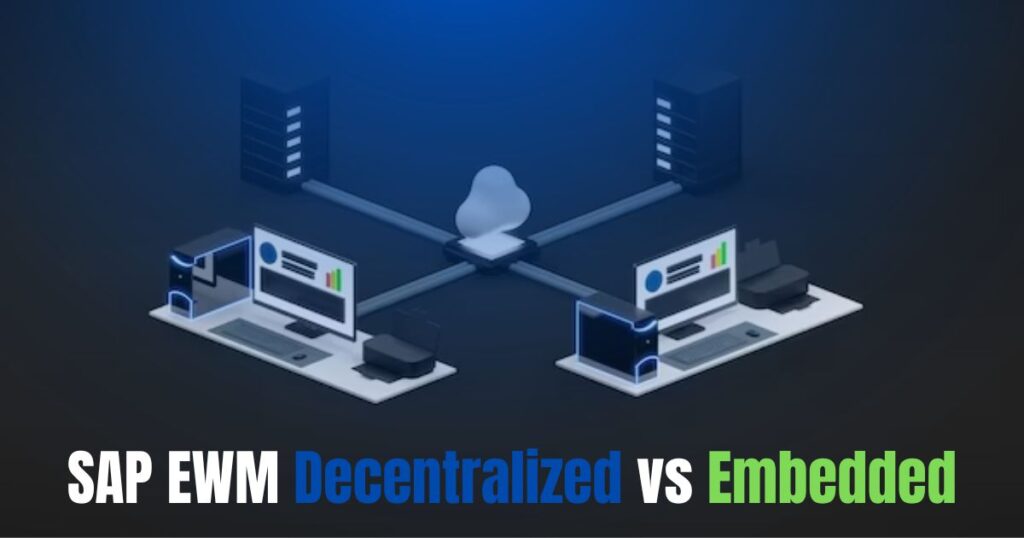SAP EWM Decentralized vs Embedded

SAP Extended Warehouse Management (EWM) is a powerful warehouse management system designed to help businesses manage their inventory and logistics operations more efficiently. It comes in two deployment options: decentralized and embedded. Both options have their own advantages and disadvantages, and businesses need to carefully evaluate their needs before choosing the one that is right for them. In this blog, we will explore the differences between SAP EWM decentralized and embedded deployment options to help you make an informed decision.
SAP EWM Decentralized Deployment:
SAP EWM decentralized deployment is an independent system that is installed and configured separately from the SAP ERP system. It requires a separate database and server infrastructure, which can make it more expensive to implement and maintain than the embedded option. However, it offers greater flexibility and customization options, making it the ideal choice for businesses that have complex warehouse management requirements.
One of the main advantages of SAP EWM decentralized deployment is that it can integrate with different backend systems, including non-SAP systems. This means that businesses can manage their entire warehouse operations from a single system, regardless of the underlying systems they use. Additionally, it provides businesses with more control over their data and processes, allowing them to tailor the system to their specific needs.
Another advantage of SAP EWM decentralized deployment is that it offers advanced features, such as slotting optimization, labor management, and advanced picking and put away strategies. These features enable businesses to optimize their warehouse operations, reduce costs, and improve customer service.
SAP EWM Embedded Deployment:
SAP EWM embedded deployment, on the other hand, is a warehouse management system that is integrated with the SAP ERP system. It shares the same database and server infrastructure as the SAP ERP system, which makes it easier and more cost-effective to implement and maintain than the decentralized option. It is ideal for businesses that have simpler warehouse management requirements and want a more streamlined approach.
One of the main advantages of SAP EWM embedded deployment is that it provides businesses with real-time visibility into their inventory and logistics operations. This means that businesses can track their inventory levels, shipments, and order statuses in real-time, which helps them make informed decisions and respond to changing market demands quickly.
Another advantage of SAP EWM embedded deployment is that it offers a more streamlined approach to warehouse management. Since it is integrated with the SAP ERP system, businesses can manage their entire logistics operations, including inventory management, order processing, and shipping, from a single system. This makes it easier to manage their supply chain and reduces the risk of errors and inconsistencies.
Which option is right for you?
Choosing between SAP EWM decentralized and embedded deployment options depend on your specific business requirements. If you have complex warehouse management needs and want more flexibility and customization options, SAP EWM decentralized deployment is the right choice for you. However, if you have simpler warehouse management requirements and want a more streamlined approach, SAP EWM embedded deployment is the way to go?
When evaluating the options, it is important to consider the total cost of ownership, including implementation, maintenance, and ongoing support costs. While SAP EWM decentralized deployment offers more features and customization options, it is more expensive to implement and maintain than the embedded option. On the other hand, SAP EWM embedded deployment offers a more streamlined approach, but may not meet the needs of businesses with more complex warehouse management requirements.
SAP EWM decentralized and embedded deployment options both have their own strengths and weaknesses. Choosing the right option depends on your specific business requirements, budget, and long-term goals. Businesses should carefully evaluate their needs before selecting an option, as the right choice can make a significant difference in their warehouse management efficiency, cost, and customer service.
